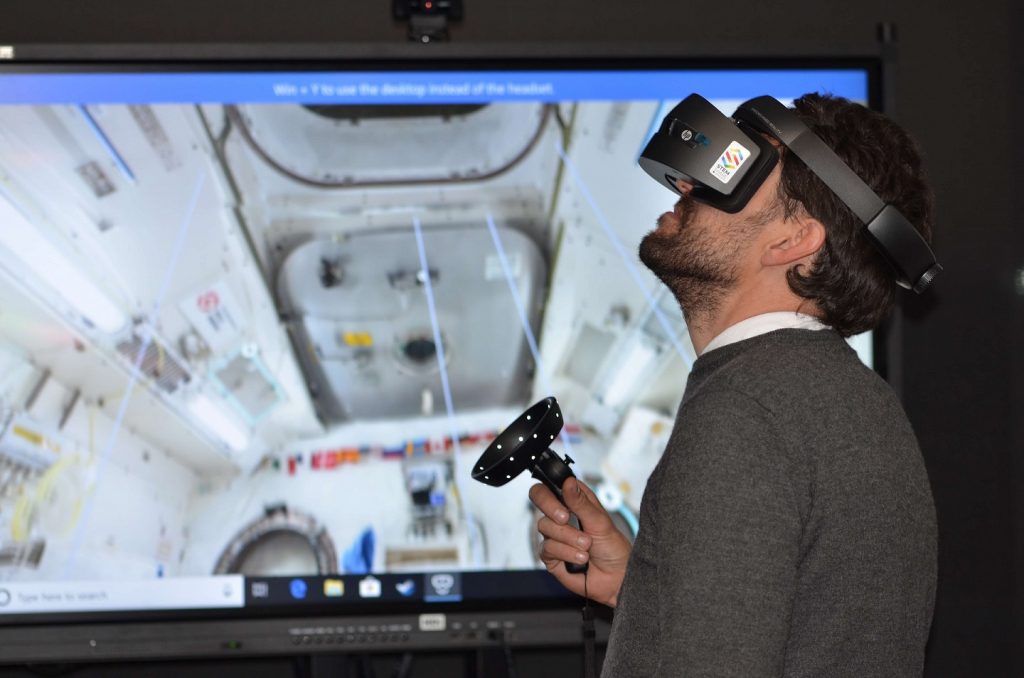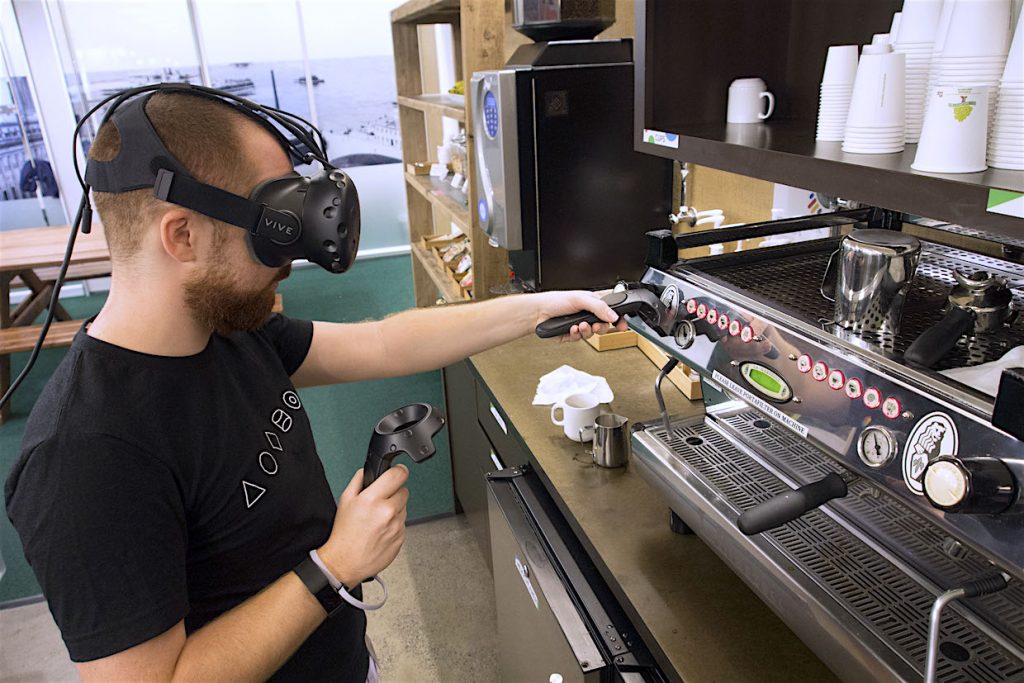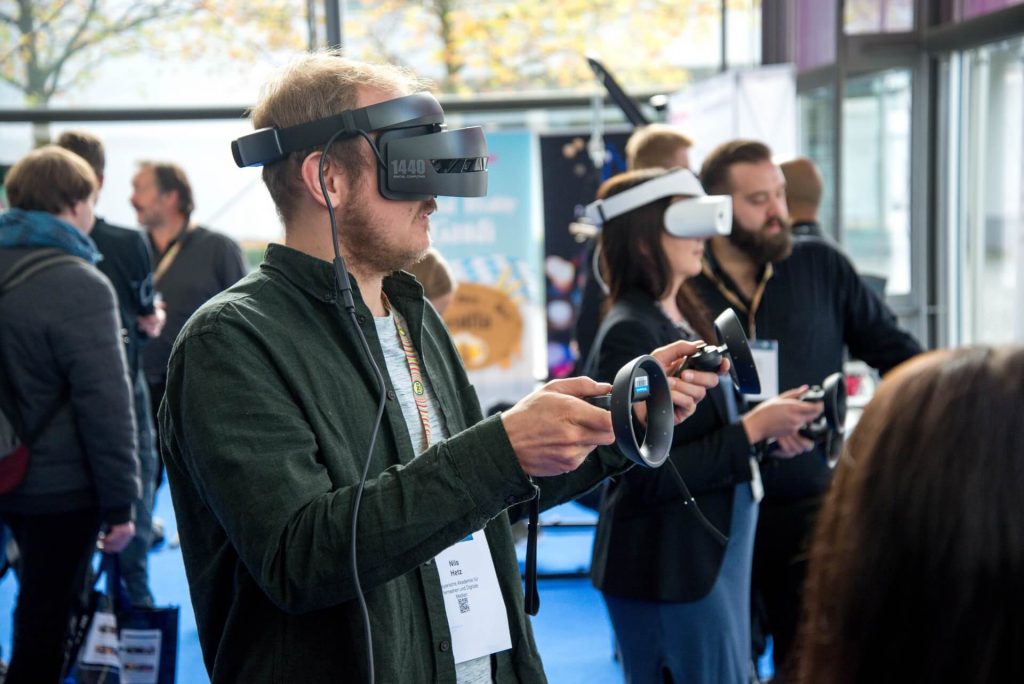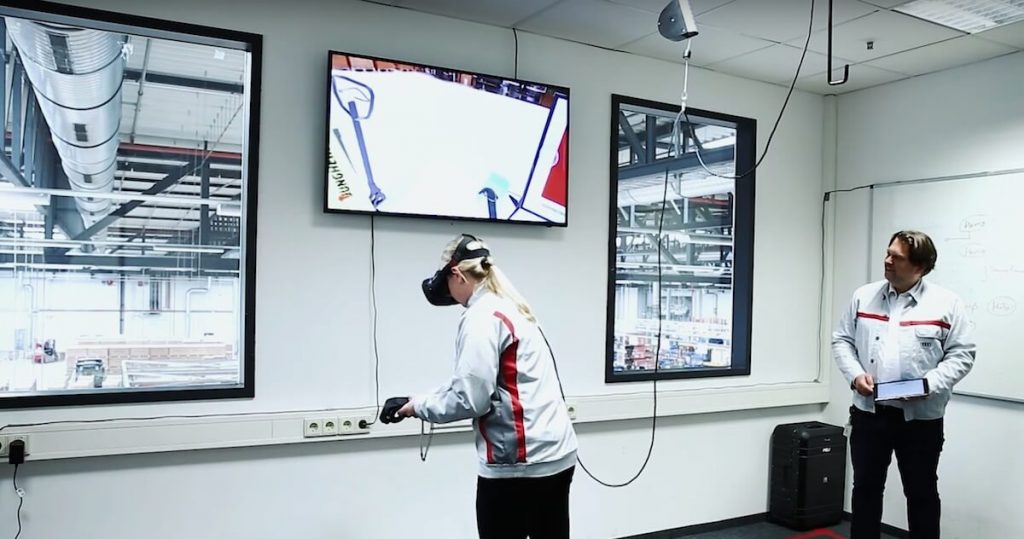When a retail company hires a new employee, they may need that person on the sales floor as soon as possible. One way to achieve a quick onboarding experience is through the use of virtual reality (VR). This technology creates realistic workplace experiences, which allows employees to train without disrupting the workflow or customer interactions.
Some businesses have assimilated this type of retail training quickly into their practices, while others have only scratched the surface. Individuals who have had training using VR report that it helped them perform their tasks more efficiently, or learning a new way to deal with a difficult situation. The cost of VR equipment has decreased over the years as well. By using this technology, companies and employees will see a variety of benefits.
Uses of VR in Training
Companies that utilize VR for their employee education sessions save both time and resources in their retail training process. Instead of relying on senior individuals to leave the floor or spend time with new hires, businesses can place new hires into virtual environments. Aside from these benefits, other contributions that this technology offers include:
- Building a team: Situations, where collaboration is necessary between employees, can be created using VR technology. Whether its a problem on the floor or a behind the scenes issue, groups of individuals can act together to solve the problem. These scenarios can either be high stress or time-sensitive to allow team members to experience and practice for these instances.
- Shortening Onboarding: Retail employees can have a high turnover rate, especially during the holiday season. For stores that require short team employees or quick training sessions, VR provides these businesses with a chance to teach these individuals without using large amounts of time to do so.
- Sharing information: Top-performing employees cannot always be pulled from the floor to train new hires. However, artificial intelligence (AI) or virtual trainers can perform these duties. Virtual trainers can share information easily with trainees as well as documenting their exact actions or how well they performed a task.
- Testing changes to current practices: Updates to current business processes are bound to happen at some point within a company. VR lets employees try out new processes in a safe environment without involving real-life customers in the retail training process. The interactive aspect of VR builds engaging experiences for employees and possibly the chance to create empathy in tricky situations like an unsatisfied customer, or Black Friday rush.
- Preparing for the worst: Robberies, natural disasters, and angry customers are not situations that usually happen during an employee’s training. VR, however, can help prepare individuals for these scenarios without placing them into dangerous situations. The knowledge and practice will be useful should any of these incidents occur in the real world.

Companies with VR for Employee Development
The leading adapter of VR for employee training was Walmart. Initially, the company used the technology in their special academies, but have now branched out to using mobile versions to train individuals at their store location. The company can replicate different situations that might not happen when a person is training on the floor, for instance Black Friday. In 2017, the company used their VR headsets to let new hires learn how to deal with the crazy day. The situations helped employees with crowd control and confrontations.
Home improvement store Lowe’s used VR to help employees with their DIY project offerings. The training session takes place in the company’s Holoroom How To, a virtual classroom. After completing the session, team members would have more knowledge about products, and hands-on experience for certain DIY projects. A virtual experience reduces wasted products from employee practice.
IKEA implemented VR training for their HR team. Their system delivered the sessions in 16 different languages for workers. During the experience, workers were placed in various environments within IKEA and in leadership positions to practice the company’s key values. Overall, employees enjoyed the experience when IKEA introduced it to them.
VR is the Next Step in Retail Training
Virtual reality is helping retail companies with bringing new members of the team up to speed quickly. The employer can set employees into situations to practice how to deal with customers or other situations specific to their business.
When executing the use of VR for employee education, companies can test common and uncommon problems or scenarios that people might face. It also allows senior employees to stay on the floor working rather than taking the time to run training sessions. The technology places individuals in a safe environment and can record their reactions through the simulations. Employers can use these results to teach the person how to improve their skill set.
Three large retail companies, Walmart, Lowe’s and IKEA have used VR to train their team members. While each business used the VR experience a little differently, all of them achieved a faster assimilation process for employees. Walmart created a session to prepare team members for the chaos of Black Friday. Meanwhile, Lowe’s allowed individuals to practice DIY projects without wasting product. IKEA tested their teams on core values and executing them while on the job.
While VR is currently used for training retail employees, there could be other uses for this technology in other aspects of the industry. From customer interactions to store set-ups, VR has the opportunity to assist or enhance processes. But for now, VR helps companies with the education of their teams.





